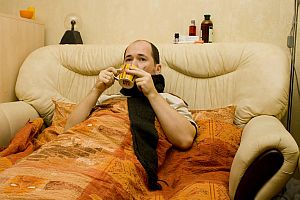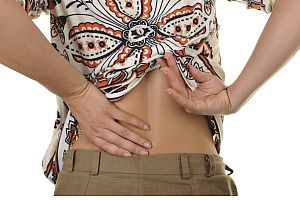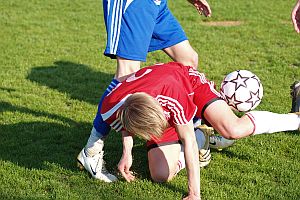Cold-Weather Risks to Your Health: What You Should Know

Last winter was a particularly tough one across much of North America, given the combination of the freakish “Polar Vortex” winds and snowstorms possibly brought about as a result of climate change. Hundreds of people died, either in transportation-related accidents or from exposure to the cold temperatures. But did you know that your health is at greater risk any time the weather gets cold, not just when near-blizzard conditions strike?
The most obvious health risks from low temperature are hypothermia and frostbite. Hypothermia occurs when you allow your body temperature to drop below 95°F (35°C) and can be very dangerous—it can result in disorientation and can actually stop your heart. About 700 Americans per year die from hypothermia. Frostbite—when your nose, ears, cheeks, fingers or toes are exposed to extreme cold—is not usually fatal, but can result in gangrene and the loss of the frostbitten limbs. To protect against both, “layer up” with warm clothing, keep dry, and don’t stay outside too long.
There are other cold weather health risks that are even more common:
- Colds and flu. Although they can occur in warm weather too, your risk of contracting these viral diseases goes way up during the winter months. To prevent them, wash your hands often, avoid work or family environments where others have colds or the flu, and if you get sick yourself, stay home. Don’t “tough it out” and go to work and spread the virus.
- Sore throats. These symptoms are more prevalent in cold weather, and there is some evidence that they are triggered by sharp changes in temperature, such as going in and out from warm, heated homes and offices to cold weather outside. If you feel that scratchy sensation in your throat, treat it immediately by gargling with salt water.
- Asthma. If you already suffer from symptoms of asthma, cold weather may trigger more attacks than usual, including wheezing and shortness of breath. So try to stay indoors on cold, windy days and keep your rescue inhalers handy.
- Norovirus. Otherwise known as the “winter vomiting bug.” It’s not fatal, but if you catch it you may wish you were dead. This is an infectious disease that is transmitted via contact, so avoid public places if you’re susceptible to it.
- Arthritis and joint pain. Yes, your mother and grandmother were correct that you can “feel the effects of cold weather in your bones.” Maintaining your daily exercise regimen can help to prevent outbreaks of joint pain when the weather gets cold.
- Cold hands and feet. No, it’s not just your imagination. Cold weather affects your circulation, and your fingers and toes can literally “turn blue” in cold weather. To limit this, try to avoid caffeine, smoking, and drinking alcohol, all of which restrict circulation.
- Depression. Although technically not a transmittable disease per se, about 5% of Americans (75% of them women) experience seasonal affective disorder (SAD), which causes them to become clinically depressed, socially withdrawn, fatigued and sleepy, to crave carbohydrates, and gain weight. An additional 15% of the public has a milder form of the condition. Spending more time in sunlight or using full-spectrum light bulbs in your house and office can help to stave off depression.
- Dry skin. It’s even more important to stay hydrated and keep your skin moisturized during the winter months than it is during the hot summer months. A tip to be aware of is that “moisturizers” and skin lotions aren’t really absorbed through your skin. What they do is act as a sealant to keep moisture from evaporating, so the best time to apply them is right after a bath or shower.
- Heart attacks and stroke. We’ve saved this one for last, because it’s the most important winter health risk that you should be aware of. Your blood vessels constrict in cold weather, which can raise your blood pressure and trigger stress reactions that place additional burdens on your heart and circulatory system. Numerous studies have shown that the incidence of heart attacks and stroke go up dramatically during cold weather, and that the greatest periods of risk may be when the temperature changes rapidly during the day. One recent study showed that each 5-degree fluctuation in temperature increased stroke hospitalizations by 6%, and that each additional fluctuation increased the risk by an additional 2%. So don’t over-exercise when the temperatures get cold, or are fluctuating wildly. Take it easy while shoveling snow (one of the biggest winter weather sources of heart attacks) and while performing winter sports such as skiing, snowboarding, and cross-country skiing.
Additional Resources
Winter fitness: Safety tips for exercising outdoors. http://www.mayoclinic.org/healthy-living/fitness/in-depth/fitness/art-20045626
Everyday Preventive Actions That Can Help Fight Germs, Like Flu. http://www.cdc.gov/flu/pdf/freeresources/updated/everyday_preventive.pdf
Are You SAD This Winter? Coping with Seasonal Affective Disorder. http://psychcentral.com/lib/are-you-sad-this-winter-coping-with-seasonal-affective-disorder/00010241








